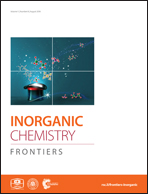Cu/Ni nanoparticles supported on TiO2(B) nanotubes as hydrogen generation photocatalysts via hydrolysis of ammonia borane
Abstract
TiO2(B) nanotubes (NTs) were used as carriers to support metal Cu/Ni nanoparticles for the catalytic hydrolysis of ammonia borane (NH3BH3, AB) under visible light. The TiO2 NTs were first prepared by the hydrothermal method and subsequently loaded with Cu/Ni metal nanoparticles by the impregnation reduction method. The structure, morphology, and chemical composition of the as-obtained catalysts were characterized by X-ray diffraction (XRD), scanning electron microscopy coupled with energy dispersive X-ray spectroscopy (SEM-EDX), transmission electron microscopy (TEM), inductively coupled plasma emission spectroscopy (ICP), and ultraviolet–visible spectroscopy (UV-Vis). The characterization results revealed that the metal nanoparticles were uniformly loaded on the surface of the TiO2 NTs, while the band gap of the catalyst was reduced significantly from 3.22 to 2.68 eV. The catalysts showed an excellent photocatalytic performance towards the hydrolysis of AB for H2 production. Thus, the H2 production rate of Cu0.64Ni0.36-TiO2 NTs reached 5763.86 mL g−1 min−1, with a total turnover frequency (TOF) of 15.90 mol H2 (mol cat)−1 min−1 for a loading volume of metal particles of 5.25 wt%. The results presented herein demonstrate that TiO2(B) can be a potential photocatalyst for effective H2 production, and also provide a cheap and effective approach to improve the light-to-H2 energy conversion.



 Please wait while we load your content...
Please wait while we load your content...